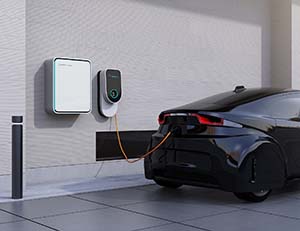AO4409일반적인 응용 회로
AO4409일반적인 응용 회로
1. 응용 프로그램 시나리오
1. 전력 관리:노트북, 스마트폰 및 기타 휴대용 기기의 전력 관리 시스템에서 AO4409는 뛰어난 스위칭 특성과 고효율로 인해 전력 공급 장치의 분배 및 관리를 효과적으로 제어하고 장비의 전반적인 에너지 효율을 향상시킬 수 있습니다.
2. DC-DC 컨버터:DC-DC 컨버터에서 AO4409는 변환 효율을 향상시키는 핵심인 고주파로 전환하는 기능을 제공할 수 있습니다.특히 자동차 충전기, 태양광 인버터 등 각종 장비 적용에서 두각을 나타내고 있다.
3. 모터 드라이브:드론 및 기타 소형 전기 장치 등 모터 드라이브 애플리케이션에도 적합한 AO4409는 모터의 성능과 수명을 최적화하는 것은 물론, 모터의 정밀한 제어를 할 수 있도록 도와준다.
4. 부하 스위치:또한 AO4409는 안정적인 장비 작동을 보장하기 위해 고출력 부하 스위치를 제어하기 위한 부하 스위치로도 일반적으로 사용됩니다.
둘째, parameter 특성
1. 낮은 온저항:온저항은 약 8.5 밀리옴에서 10 밀리옴 사이로 매우 낮으며, 이는 온상태에서 AO4409의 전력 소비와 열 출력이 매우 작아 시스템의 전체 효율을 향상시킨다는 것을 의미합니다.
2. 높은 최대 드레인 소스 전압:최대 드레인 소스 전압이 30V에 도달하므로 AO4409는 더 높은 전압 환경에서 작동할 수 있으며, 전압 요구 사항이 더 높은 다양한 응용 분야에 적합합니다.
3. 고전류 운수용량:장치의 연속 드레인 전류는 최대 20A 이며, 펄스 전류는 더 높은 수준에 도달할 수 있어 큰 전류 부하에서 안정성과 신뢰성을 보장합니다.
4. 고속 스위칭 특성:고속 스위칭 특성은 고주파 스위칭 (예:효율적인 전력 변환)이 필요한 애플리케이션에 매우 중요합니다.
5. 넓은 작동 온도 범위:작동 온도 범위는-55°C~150°C로 다양한 극한 환경에 적합하며, 장비가 다양한 온도 조건에서 정상적으로 작동할 수 있도록 보장합니다.



